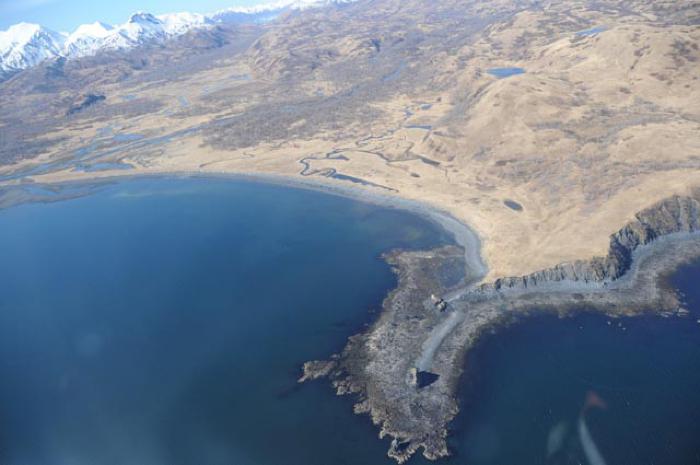Eagle Harbor — Irak

Today the grass-covered depressions of sod houses and the memories shared by Elders are all that remain of Eagle Harbor, a once sizeable Alutiiq village. This community rested on the southern shore of Ugak Bay, facing Saltery Cove and the rocky capes of Pasagshak. Historic sources indicate the community may have been present as early as 1805. In 1837, Eagle Harbor became a relocation village for Native survivors of a smallpox epidemic. More than 730 Native people died during the epidemic, decimating many small communities. Russian colonists reorganized the Native population into communities, often near workstations. As part of the relocation effort, the Russian artel Igak, in Saltery Cove, moved across Ugak Bay to Orlovsk, or Eagle Harbor. Here, Native laborers lived in Orlovsk while Russian American Company staff members lived in the adjacent community of Minokovo.
Despite its grim start, Eagle Harbor flourished. It was well located for harvesting sea lions that were plentiful on Ugak Island at the mouth of the bay. Residents also took large quantities of salmon from streams beside the village. Some families also kept cattle, while others worked as sea otter hunters and trappers. The community had a Russian Orthodox Church and a store. In 1879 Eagle Harbor was home to about 265 people. In the summertime, people moved across the bay to work temporarily at the salmon saltery at Saltery Cove. By 1920, families were moving out of Eagle Harbor. Trapping produced little income, the store closed, and people needed jobs. Village families gradually moved to Kodiak, Woody Island, and Old Harbor.
